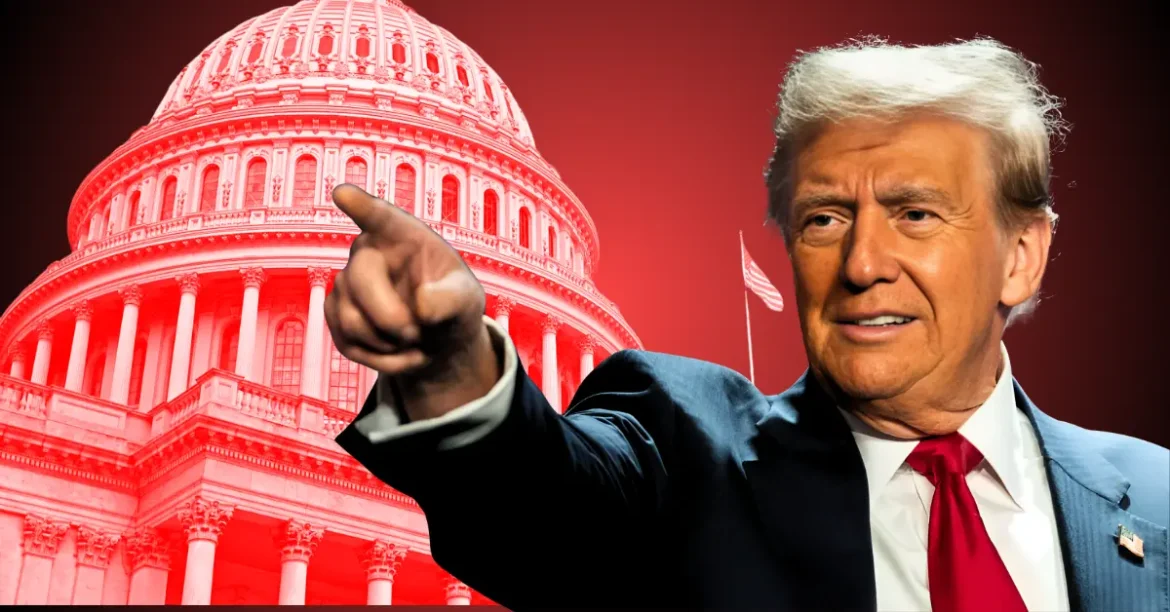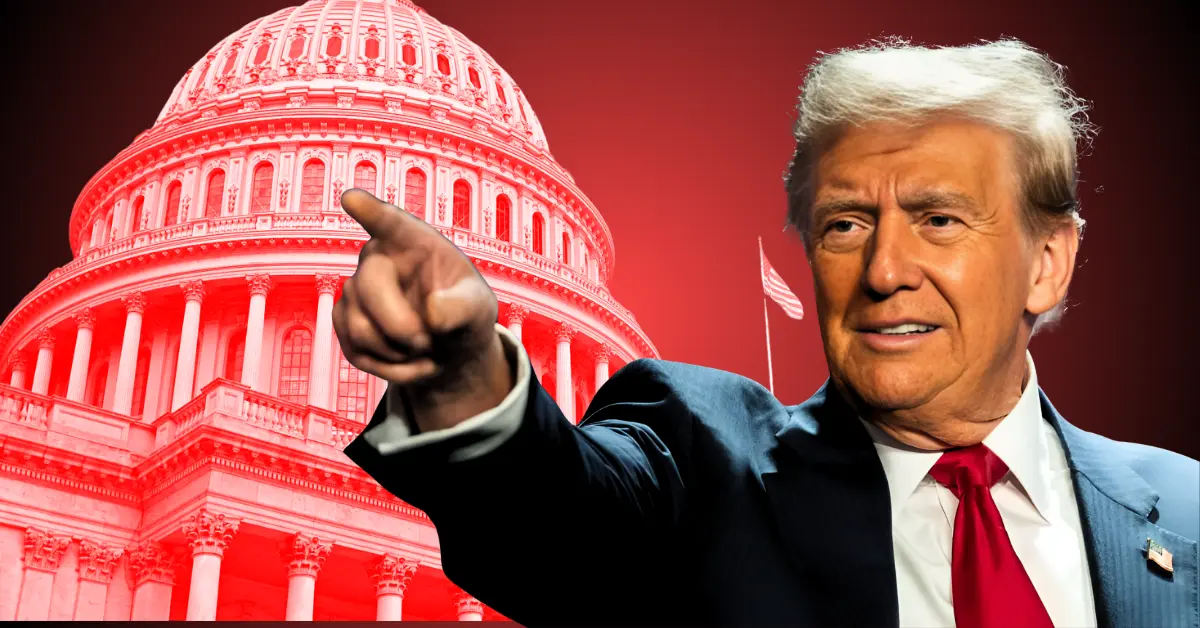The Complexities of Monetary Policy: Trump’s Fed Visit and the Swiss Dream
A Presidential Visit with a Purpose
Donald Trump’s visit to the Federal Reserve headquarters was not merely a ceremonial gesture. It was a calculated move to exert pressure on Fed Chair Jerome Powell, continuing his long-standing advocacy for lower interest rates. Trump’s public statements during and after the visit underscored his desire for the U.S. to adopt interest rate policies similar to those of Switzerland, which boasts significantly lower rates. This push came at a time when concerns about the Fed’s independence and the potential for political interference in monetary policy were already simmering.
Trump’s visit was a bold statement, reflecting his belief that lower interest rates could act as a catalyst for economic growth. However, the implications of such a move are far more nuanced than they appear at first glance. The Fed’s role in maintaining economic stability is delicate, and any significant shift in monetary policy can have far-reaching consequences.
The Swiss Model: An Attractive but Complex Comparison
Trump’s frequent references to Switzerland’s benchmark interest rate of 0.50% as a model for the U.S. highlight a fundamental misunderstanding of the differences between the two economies. Switzerland’s economic structure, currency, and financial landscape are vastly different from those of the United States. The Swiss National Bank (SNB) has historically pursued a more aggressive monetary policy, sometimes even implementing negative interest rates to combat deflationary pressures and manage the Swiss franc’s value.
The U.S. economy, on the other hand, is far larger and more complex, with a different set of challenges and opportunities. A simple adoption of Swiss-style interest rates could have unintended consequences, potentially leading to inflation, asset bubbles, or other economic imbalances. The Swiss economy is heavily reliant on exports and has a strong currency, which requires a different approach to monetary policy than that of the U.S.
Moreover, Switzerland’s low interest rates are a response to specific economic conditions, including a strong currency and low inflation. The U.S. economy, with its higher inflation rates and a more diverse economic base, would likely face different outcomes if it were to adopt similar policies. The comparison, while appealing in its simplicity, overlooks the intricate web of factors that influence monetary policy decisions.
The 300-Basis-Point Call: A Bold Proposition
Trump’s call for a 300-basis-point rate cut was particularly striking. Such a drastic reduction would represent a major shift in monetary policy, potentially weakening the dollar and fueling inflation. While proponents of lower rates argue that it would boost economic growth and make borrowing cheaper for businesses and consumers, critics fear that it could destabilize the economy.
The Fed, under Powell’s leadership, has generally favored a more cautious and data-dependent approach to monetary policy. This approach seeks to balance the goals of promoting full employment and maintaining price stability, while also considering the potential risks of excessive easing or tightening. A 300-basis-point cut would be a significant departure from this cautious stance, and the potential consequences are difficult to predict.
Furthermore, such a drastic cut could send a signal to financial markets that the Fed is willing to prioritize short-term political goals over long-term economic stability. This could undermine investor confidence and lead to volatility in financial markets. The Fed’s role is to provide a stable economic environment, and any sudden or drastic changes to monetary policy could disrupt this stability.
Independence Under Pressure: A Delicate Balance
Trump’s persistent pressure on the Fed raised serious questions about the central bank’s independence. The Fed is designed to operate independently of political influence, ensuring that monetary policy decisions are based on economic considerations rather than political expediency. This independence is considered crucial for maintaining the credibility of the central bank and fostering long-term economic stability.
Any perceived political interference in the Fed’s decision-making process could roil financial markets, undermine investor confidence, and ultimately harm the economy. While presidents have historically expressed their views on monetary policy, Trump’s repeated and public demands for lower rates crossed a line for many observers, who viewed it as a direct challenge to the Fed’s autonomy.
The Fed’s independence is a cornerstone of its credibility. If the central bank is seen as being influenced by political pressures, its ability to effectively manage the economy could be compromised. This could lead to a loss of confidence in the Fed’s ability to make sound monetary policy decisions, which could have serious consequences for the economy.
Powell’s Stance: Navigating Troubled Waters
Jerome Powell found himself in a difficult position, caught between the president’s demands and the need to maintain the Fed’s independence and credibility. While acknowledging the president’s concerns about economic growth, Powell consistently emphasized the Fed’s commitment to its dual mandate of price stability and full employment.
Powell’s cautious approach reflected a desire to avoid making any sudden or drastic changes to monetary policy that could destabilize the economy. He also sought to reassure markets that the Fed would remain data-dependent, adjusting its policy as needed based on evolving economic conditions. This approach is crucial for maintaining the Fed’s credibility and ensuring that monetary policy decisions are based on sound economic principles.
Powell’s stance underscores the importance of the Fed’s independence. By remaining steadfast in his commitment to the Fed’s dual mandate, Powell demonstrated that the central bank is willing to make decisions based on economic data rather than political pressure. This is essential for maintaining the Fed’s credibility and ensuring that monetary policy decisions are made in the best interests of the economy.
The Debt Factor: A Hidden Driver?
One of the underlying factors driving Trump’s desire for lower interest rates could be the U.S. national debt. Lower rates would reduce the government’s borrowing costs, easing the burden on taxpayers. However, relying on low interest rates to manage the debt is a risky strategy, as it could lead to inflation and other economic problems.
A more sustainable approach would involve addressing the underlying fiscal imbalances that contribute to the debt. This could include measures to reduce government spending, increase tax revenues, or both. Relying on low interest rates to manage the debt is a short-term solution that could have long-term consequences. It is essential to address the root causes of the debt rather than relying on monetary policy to manage it.
Furthermore, the U.S. national debt is a complex issue that requires a comprehensive approach. Simply relying on low interest rates to manage the debt overlooks the need for fiscal responsibility and long-term planning. A balanced approach that addresses both monetary and fiscal policy is essential for ensuring the long-term stability of the economy.
Global Context: A World of Varying Rates
Trump’s focus on Switzerland and the EU highlighted the global landscape of interest rates. Many developed countries have maintained low or even negative interest rates in recent years, reflecting concerns about slow economic growth and deflation. However, the U.S. economy has generally outperformed many of its peers, with stronger growth and lower unemployment. This has led the Fed to adopt a more hawkish stance, gradually raising interest rates to prevent inflation from overheating the economy.
The global context underscores the complexities of monetary policy and the challenges of comparing interest rates across different countries with varying economic conditions. Each country’s economic situation is unique, and monetary policy decisions must be tailored to address specific challenges and opportunities. Comparing interest rates across countries without considering the broader economic context can lead to misleading conclusions.
Moreover, the global economy is interconnected, and monetary policy decisions in one country can have ripple effects across the world. The Fed’s decisions, for example, can influence global financial markets and economic conditions. This underscores the importance of considering the global context when making monetary policy decisions.
Economic Impact: A Mixed Bag of Possibilities
The potential economic impact of Trump’s proposed rate cuts is a subject of debate. Proponents argue that lower rates would stimulate economic growth, boost investment, and create jobs. They also point to the potential for a weaker dollar to boost exports and reduce the trade deficit. However, critics warn that lower rates could lead to inflation, asset bubbles, and other economic imbalances. They also argue that the U.S. economy is already operating near full capacity, and that further stimulus could simply lead to higher prices.
The actual impact of lower rates would depend on a variety of factors, including the state of the economy, the level of inflation, and the response of financial markets. Monetary policy decisions are complex and must be carefully calibrated to achieve the desired outcomes. A one-size-fits-all approach is unlikely to be effective, and policymakers must consider the unique circumstances of the economy when making decisions.
Furthermore, the timing of monetary policy decisions is crucial. Lowering interest rates at the wrong time could have unintended consequences, such as fueling inflation or creating asset bubbles. Policymakers must carefully consider the economic conditions and the potential consequences of their decisions before taking action.
Conclusion: A Legacy of Pressure
Donald Trump’s persistent campaign for lower interest rates and his public pressure on the Federal Reserve marked a significant departure from traditional norms. While his arguments about boosting economic growth resonated with some, his actions raised concerns about the Fed’s independence and the potential for political interference in monetary policy. The long-term consequences of this pressure remain to be seen, but it undoubtedly left a lasting mark on the relationship between the White House and the central bank.
The “Swiss Dream,” while appealing in its simplicity, underscored the complexities of managing a large and dynamic economy in a globalized world. Monetary policy decisions must be based on sound economic principles and tailored to address the unique challenges and opportunities of the economy. The Fed’s independence is crucial for ensuring that these decisions are made in the best interests of the economy, and any perceived political interference could undermine this independence.
The legacy of Trump’s pressure on the Fed serves as a reminder of the importance of maintaining the independence of the central bank. It also highlights the complexities of monetary policy and the need for careful consideration of the economic context when making decisions. The Fed’s role in maintaining economic stability is essential, and any attempts to influence its decisions for political purposes could have serious consequences for the economy.





